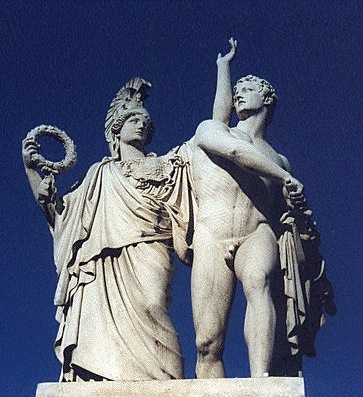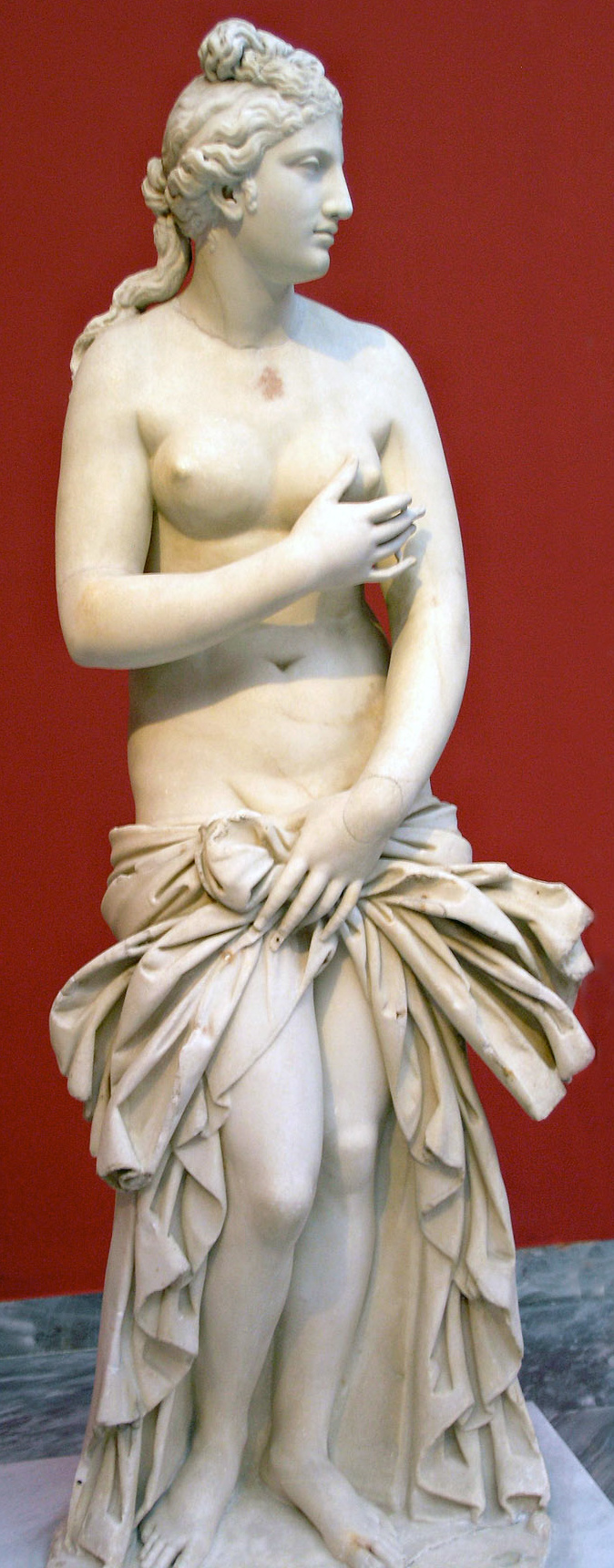|
Calesius
In Greek mythology, Calesius (Ancient Greek: Καλήσιος) was the attendant and charioteer of Axylus. He is mentioned in Book VI of Homer's ''Iliad'' where he is killed with his master by Diomedes.Homer, ''Iliad'' VI, 12–19 See also * List of Greek mythological figures Note References * Homer Homer (; grc, Ὅμηρος , ''Hómēros'') (born ) was a Greek poet who is credited as the author of the '' Iliad'' and the '' Odyssey'', two epic poems that are foundational works of ancient Greek literature. Homer is considered one of ..., ''The Iliad'' with an English Translation by A.T. Murray, Ph.D. in two volumes. Cambridge, MA., Harvard University Press; London, William Heinemann, Ltd. 1924. Online version at the Perseus Digital Library.* Homer, ''Homeri Opera'' in five volumes. Oxford, Oxford University Press. 1920. Greek text available at the Perseus Digital Library Characters in the Iliad {{Greek-myth-stub ... [...More Info...] [...Related Items...] OR: [Wikipedia] [Google] [Baidu] |
Axylus
In Greek mythology, Axylus (Ancient Greek: Ἄξυλος) was a Trojan warrior who participated in the Trojan War. Family Axylus was the son of Teuthranus. Mythology Axylus was a wealthy and young man who came from the town of Arisbe, a city in the Troad. He was killed by Diomedes during the siege of Troy.Homer, ''Iliad'' 6.12 ff. This character was mentioned in Book VI of Homer's ''Iliad'':Diomedes, expert in war cries, killed Axylus,son of Teuthranus, a rich man, from well-built Arisbe.People really loved him, for he lived beside a road,welcomed all passers-by into his home.But not one of those men he'd entertained now stoodin front of him, protecting him from wretched death.Diomedes took the lives of two men--Axylus,and his attendant Calesius, his charioteer.So both men went down into the underworld. Notes References *Homer Homer (; grc, Ὅμηρος , ''Hómēros'') (born ) was a Greek poet who is credited as the author of the '' Iliad'' and the '' Odyssey' ... [...More Info...] [...Related Items...] OR: [Wikipedia] [Google] [Baidu] |
Diomedes
Diomedes (Jones, Daniel; Roach, Peter, James Hartman and Jane Setter, eds. ''Cambridge English Pronouncing Dictionary''. 17th edition. Cambridge UP, 2006.) or Diomede (; grc-gre, Διομήδης, Diomēdēs, "god-like cunning" or "advised by Zeus") is a hero in Greek mythology, known for his participation in the Trojan War. He was born to Tydeus and Deipyle and later became King of Argos, Peloponnese, Argos, succeeding his maternal grandfather, Adrastus. In Homer's ''Iliad'' Diomedes is regarded alongside Ajax the Great and Agamemnon, after Achilles, as one of the best warriors of all the Achaeans (Homer), Achaeans in prowess (which is especially made clear in Book 7 of the ''Iliad'' when Ajax the Greater, Diomedes, and Agamemnon are the most wished for by the Achaeans to fight Hector out of nine volunteers, who included Odysseus and Ajax the Lesser). Subsequently, Diomedes founded ten or more Italian cities and, after his death, was worshipped as a divine being under various ... [...More Info...] [...Related Items...] OR: [Wikipedia] [Google] [Baidu] |
Greek Mythology
A major branch of classical mythology, Greek mythology is the body of myths originally told by the ancient Greeks, and a genre of Ancient Greek folklore. These stories concern the origin and nature of the world, the lives and activities of deities, heroes, and mythological creatures, and the origins and significance of the ancient Greeks' own cult and ritual practices. Modern scholars study the myths to shed light on the religious and political institutions of ancient Greece, and to better understand the nature of myth-making itself. The Greek myths were initially propagated in an oral-poetic tradition most likely by Minoan and Mycenaean singers starting in the 18th century BC; eventually the myths of the heroes of the Trojan War and its aftermath became part of the oral tradition of Homer's epic poems, the '' Iliad'' and the '' Odyssey''. Two poems by Homer's near contemporary Hesiod, the '' Theogony'' and the '' Works and Days'', contain accounts of the genes ... [...More Info...] [...Related Items...] OR: [Wikipedia] [Google] [Baidu] |
Ancient Greek
Ancient Greek includes the forms of the Greek language used in ancient Greece and the ancient world from around 1500 BC to 300 BC. It is often roughly divided into the following periods: Mycenaean Greek (), Dark Ages (), the Archaic period (), and the Classical period (). Ancient Greek was the language of Homer and of fifth-century Athenian historians, playwrights, and philosophers. It has contributed many words to English vocabulary and has been a standard subject of study in educational institutions of the Western world since the Renaissance. This article primarily contains information about the Epic and Classical periods of the language. From the Hellenistic period (), Ancient Greek was followed by Koine Greek, which is regarded as a separate historical stage, although its earliest form closely resembles Attic Greek and its latest form approaches Medieval Greek. There were several regional dialects of Ancient Greek, of which Attic Greek developed into Koi ... [...More Info...] [...Related Items...] OR: [Wikipedia] [Google] [Baidu] |
Homer
Homer (; grc, Ὅμηρος , ''Hómēros'') (born ) was a Greek poet who is credited as the author of the '' Iliad'' and the '' Odyssey'', two epic poems that are foundational works of ancient Greek literature. Homer is considered one of the most revered and influential authors in history. Homer's ''Iliad'' centers on a quarrel between King Agamemnon and the warrior Achilles during the last year of the Trojan War. The ''Odyssey'' chronicles the ten-year journey of Odysseus, king of Ithaca, back to his home after the fall of Troy. The poems are in Homeric Greek, also known as Epic Greek, a literary language which shows a mixture of features of the Ionic and Aeolic dialects from different centuries; the predominant influence is Eastern Ionic. Most researchers believe that the poems were originally transmitted orally. Homer's epic poems shaped aspects of ancient Greek culture and education, fostering ideals of heroism, glory, and honor. To Plato, Homer was simply t ... [...More Info...] [...Related Items...] OR: [Wikipedia] [Google] [Baidu] |
Iliad
The ''Iliad'' (; grc, Ἰλιάς, Iliás, ; "a poem about Ilium") is one of two major ancient Greek epic poems attributed to Homer. It is one of the oldest extant works of literature still widely read by modern audiences. As with the '' Odyssey'', the poem is divided into 24 books and contains 15,693 lines in its most widely accepted version, and was written in dactylic hexameter. Set towards the end of the Trojan War, a ten-year siege of the city of Troy by a coalition of Mycenaean Greek states, the poem depicts significant events in the siege's final weeks. In particular, it depicts a fierce quarrel between King Agamemnon and a celebrated warrior, Achilles. It is a central part of the Epic Cycle. The ''Iliad'' is often regarded as the first substantial piece of European literature. The ''Iliad'', and the ''Odyssey'', were likely written down in Homeric Greek, a literary amalgam of Ionic Greek and other dialects, probably around the late 8th or early 7th century BC. ... [...More Info...] [...Related Items...] OR: [Wikipedia] [Google] [Baidu] |
List Of Greek Mythological Figures
The following is a list of gods, goddesses, and many other divine and semi-divine figures from ancient Greek mythology and ancient Greek religion. Immortals The Greeks created images of their deities for many purposes. A temple would house the statue of a god or goddess, or multiple deities, and might be decorated with relief scenes depicting myths. Divine images were common on coins. Drinking cups and other vessels were painted with scenes from Greek myths. Major gods and goddesses Greek primordial deities Titans and Titanesses The Titan gods and goddesses are depicted in Greek art less commonly than the Olympians. File:Eos Memnon Louvre G115.jpg, Eos (Dawn) and the hero Memnon (490–480 BC) File:Ilion---metopa.jpg, Helios in his four-horse chariot (3rd century BC) File:0029MAN-Themis.jpg, Themis, from the Temple of Nemesis (ca. 300 BC) File:Antakya Arkeoloji Muzesi 02366 nevit.jpg, Oceanus wearing crab-claw horns, with Tethys ( Roman-era mosaic) File:Creation Promethe ... [...More Info...] [...Related Items...] OR: [Wikipedia] [Google] [Baidu] |


_-_Homer_and_his_Guide_(1874).jpg)
